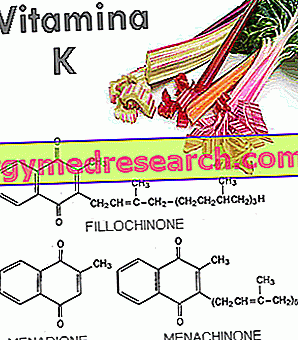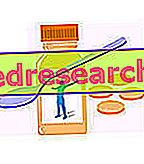Vitamin K is a fat-soluble vitamin that guarantees the correct functionality of some proteins that form and keep our bones strong. Vitamin K is also involved in blood coagulation (anti-haemorrhagic activity). Through nutrition, the right intake of vitamin K can be achieved simply by following a balanced diet.
Chemical Structure

The different forms of vitamin K include:
phylloquinone or vitamin K1 (2-methyl-3-phytyl-1, 4-naphthoquinone) of vegetable origin;
menaquinone-n or vitamin K2 of bacterial origin; the side chain is unsaturated and commonly in the all-trans configuration;
menadione or vitamin K3 (2-methyl-1, 4-naphthoquinone) is a water-soluble synthetic form.
Absorption
The different forms of vitamin K are absorbed in the same way as lipids, therefore they need the formation of micelles in the presence of bile and pancreatic juice.
Generally, the diet contains a mixture of menaquinones and phylloquinones, absorbed with an efficiency of 40 ÷ 80%.
Phylloquinone appears to be absorbed with an active mechanism in the proximal part of the small intestine, while the menaquinones and menadione are absorbed by passive diffusion.
Passive diffusion also appears to occur in the colon and this would confirm the possibility of using the menaquinone produced by intestinal bacterial flora.
Transport and Metabolism
After absorption, vitamin K becomes part of the chylomicrons and is transported to the liver, where it is transferred to the VLDL and then to the LDL that transports it to the tissues.
The main circulating form is phylloquinone (0.1 ÷ 0.7 ng / ml).
Storage organs are the liver (large amounts, which are quickly removed), the adrenal glands, the lungs, the spinal cord, and the kidneys (small quantities).
Vitamin K has a very rapid turnover; menadione is excreted in the urine in the form of menadiol phosphate, sulfate and glucoronide; phylloquinone and menaknone are degraded more slowly; the shortened β-oxidation side chains are eliminated as such or in the form of glucoronides.
Functions of vitamin K
Vitamin K is transformed into the biologically active form of hydroquinone by a reductase dependent on the presence of sulfhydryl groups and NADH.
In the presence of hydroquinone and a carboxylase some glutamate residues are carboxylated to γ-carboxyglutamate.
Among the proteins that undergo this reaction we recall:
- factors II (prothrombin), VII, IX, X of coagulation;
- the recently identified plasma proteins C, S, Z and M;
- osteocalcin, necessary for normal bone metabolism.
Blood coagulation occurs as a chain reaction in which the various factors come into action following a precise order, each activating the next. At the end of the cascade of reactions fibrinogen turns into fibrin.
Plasma thromboplastin activates factor IX which together with factor VIII and phospholipids, in the intrinsic system, activates factor X, which can also be activated by factor VII (in turn activated by tissue thromboplastin) in the extrinsic system.
The X factor, once activated, binds calcium ion and phospholipids catalyzing the activation of prothrombin (factor II) in thrombin which favors the transformation of fibrinogen into fibrin, which allows the formation of the clot.
Protein C has an anticoagulant role, is activated by thrombin in the presence of thrombomodulin (endothelial cell protein) and acts with the S protein by deactivating the Va and VIIIa factors; acts as a brake on the intrinsic system cascade through a feedback mechanism triggered by the thrombin; therefore people with congenital protein C deficiency are at high risk of thrombosis. The physiological functions of the M and Z proteins are not yet known.
Osteocalcin (or bone GLA protein) is synthesized by osteoblasts and most likely intervenes in the regulation of the incorporation of calcium phosphate into bones .
GLA proteins have been isolated in rat dentin, kidneys, sperm, hepatic mitochondria in urine and calcified atherosclerotic tissues, suggesting numerous functions of vitamin K.
According to the latest scientific research (not yet fully confirmed) in humans there would be a relationship between low levels of vitamin K in the blood and osteoarthritis, bone fractures and osteoporosis.
Deficiency and toxicity
Vitamin K deficiency in humans is very rare for:
reduced organism needs;
vitamin regeneration in the body by the reductases;
synthesis carried out by the intestinal flora.
The vitamin K deficiency in the adult is consequent to:
dysfunctions of the gastrointestinal system;
reduced bile secretion;
liver disease;
use of dicumarol-like anticoagulants (antagonists).
Newborns are particularly at risk for:
modest transport through the placenta;
sterility of the intestine in the first days of life;
inadequate liver biosynthesis of coagulation factors;
low vitamin content in female milk.
The deficiency is manifested by hemorrhagic syndrome due to inadequate synthesis of coagulation factors.
Phylloquinones and menaquinones are not toxic even at high doses, menadione can, on the other hand, be toxic, producing haemolytic anemia, hyperbilirubinemia and jaundice, so it cannot be used in the pharmacological treatment of hemorrhage.
Feeders and recommended ration
Vitamin K is widely distributed in foods, leafy vegetables (spinach, lettuce, broccoli, cabbage, Brussels sprouts, turnip greens etc.) are particularly rich, while fruit, cereals, meat and dairy products contain less significant quantities.
The recommended ration according to the LARN is 1 µg / kg of weight / day, easily reachable with a normal mixed diet.



